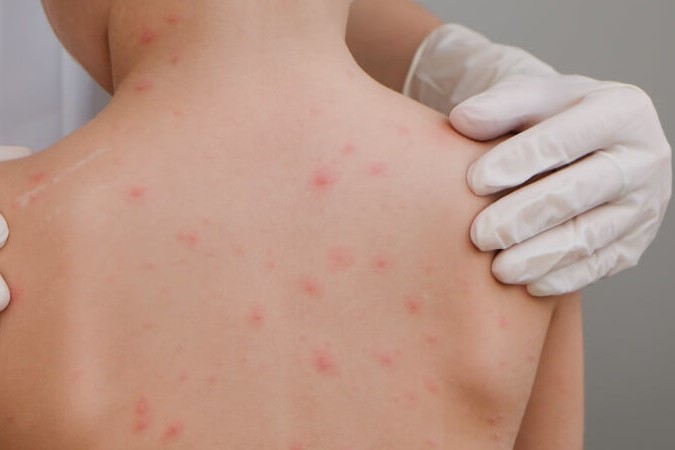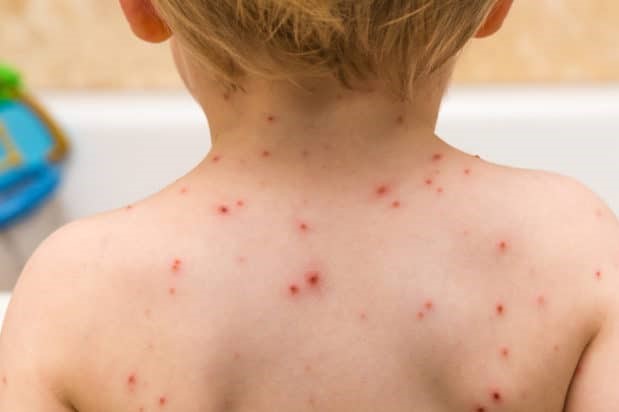
Paediatrics: managing chickenpox in children
Chickenpox is a highly infectious disease common in children. It can result in itchy rashes with blister formations all over the body that may last for weeks
What is ChickenPox
Varicella, commonly known as chickenpox, is caused by the varicella-zoster virus.
It is a self-limiting viral illness with occasional complications.
Chickenpox is a highly infectious disease common in children. It can result in itchy rashes with blister formations all over the body that may last for weeks is a highly contagious disease that affects nearly all susceptible children before hitting adolescence.
It causes a blister-like rash that starts on the facial area and slowly spreads throughout the body.
It is easily spread through direct contact or by fluid droplets in the air when the person who has it coughs or sneezes.
A person with varicella-zoster in their system is considered infectious from the first two days before the rash appears until the blisters have dried up.
Symptoms are usually mild to young children but may be life-threatening to high-risk groups, including:
- Newborns or babies within their first 28 days of life
- Unvaccinated pregnant women and those who have not had chickenpox before
- People with an impaired immune system, such as those with leukemia or taking immunosuppressive medications.
CHILD HEALTH: LEARN MORE ABOUT MEDICHILD BY VISITING THE BOOTH AT EMERGENCY EXPO
Chickenpox: Signs and Symptoms
Each child may experience symptoms differently, but here are the common signs of chickenpox in children.
- Low-grade Fever
- Generalised body ache
- A feeling of discomfort, illness, or lack of wellbeing
- Decrease in appetite
- The appearance of itchy rashes with raised red papules (bumps) within 1 to 2 days
- The bumps will be later become fluid-filled blisters, which drains, crust, and heal in weeks.
Most children will recover within a few weeks after the first appearance of rashes. It usually leaves no permanent scars unless the infection goes deeper and destroy the skin barrier.
Tiny white spots may remain as the crusts start all over. Expect that the skin will be back to normal in no time.
Treatment for Chickenpox
In severe illness, the child may need antiviral medication as treatment.
But in most cases, the chickenpox symptoms are mild, without specific treatment.
The following treatment aims to relieve symptoms and reduce complications.
These include:
Stay at Home
Since chickenpox is highly contagious, keeping the child at home is the best desi. Limit their exposure to others until the blister has formed scabs and no blisters develop within days. It usually takes about a week before the blisters will dry up.
Take Over-the-Counter Medications
Children should not use aspirin and other products containing the said drug to relieve fever and other chickenpox symptoms. Such use is linked with Reye’s syndrome, a rare disorder that can cause severe liver and brain damage.
Instead, give the child non-aspirin medication such as acetaminophen to relieve fever-like symptoms.
Soak in colloidal oatmeal baths
Colloidal oatmeal help relieve some of the itches from the chickenpox rashes. Add the oats while the tub is filling up with lukewarm water.
Apply ointments
Use topical ointments such as calamine lotion, petroleum jelly, and anti-itch lotions. Avoid using over-the-counter topical antibiotics as they often cause an allergic reaction.
Get Vaccinated
The best way to prevent chickenpox and its severe symptoms is to get the vaccine. Everyone, including children, adolescents and adults, should receive at least two doses of the vaccine if they have never had it before.
The varicella vaccine can prevent almost all cases of severe illness. If the person does get chickenpox, the symptoms are usually mild, without fever, and no appearance of blisters.
Read Also:
Emergency Live Even More…Live: Download The New Free App Of Your Newspaper For IOS And Android
Bone Cysts In Children, The First Sign May Be A ‘Pathological’ Fracture
Raising The Bar For Pediatric Trauma Care: Analysis And Solutions In The US



